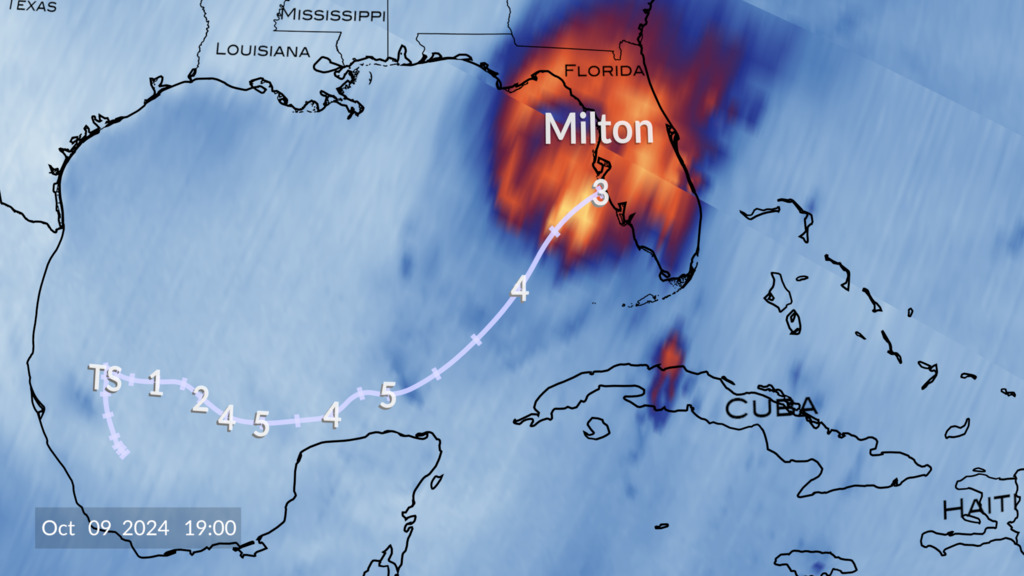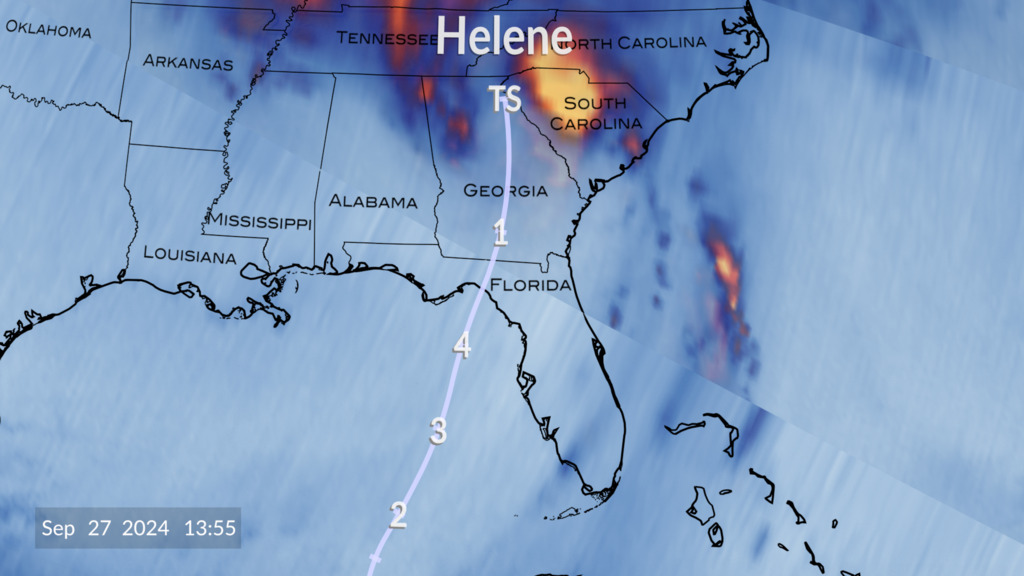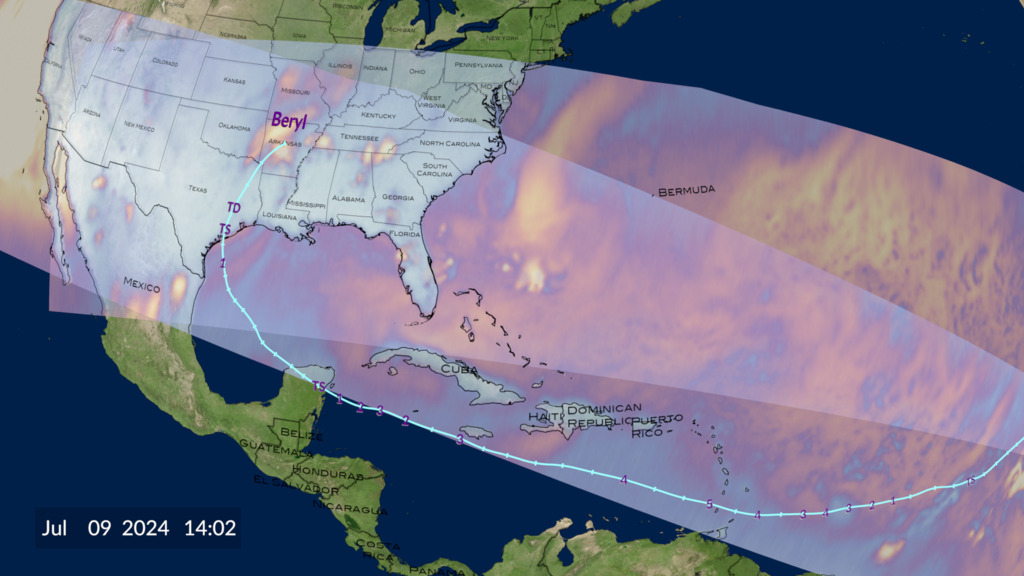TROPICS Tracks Hurricane Debby
This data visualization starts by showing the constellation of cubesats that make up the TROPICS mission collecting data across the globe. The camera then pushes in tighter to show Tropical Depression Debby over Haiti. We then follow Debby's path over Cuba as it begins to organize into a Tropical Storm. It then strengthens to a category 1 hurricane in the Gulf of Mexico right before hitting Florida, where it quickly weakens back into a Tropical Storm. It then slowly moves over Georgia and South Carolina flooding both those states.
The Time-Resolved Observations of Precipitation structure and storm Intensity with a Constellation of Smallsats (TROPICS) mission is a constellation of small satellites designed to monitor global precipitation events on a much more frequent basis than what large single satellites can do. It is a short term demonstration mission supporting the concept of high cadence small CubeSat weather observations. These small satellites can be much more cost effective than their much larger counterparts, and launching many of them can provide more frequent coverage.
TROPICS monitored Hurricane Debby throughout it's lifecycle. This data visualization shows how the Tropical Depression formed into a Category 1 hurricane which eventually hit Florida and flooded parts of the east coast.
Credits
Please give credit for this item to:
NASA's Scientific Visualization Studio
-
Data visualizers
- Alex Kekesi (Global Science and Technology, Inc.)
- Greg Shirah (NASA/GSFC)
-
Scientists
- Scott Braun (NASA/GSFC)
- William J. Blackwell (MIT Lincoln Laboratory)
-
Technical support
- Laurence Schuler (ADNET Systems, Inc.)
- Ian Jones (ADNET Systems, Inc.)
Release date
This page was originally published on Friday, August 23, 2024.
This page was last updated on Tuesday, January 21, 2025 at 12:14 AM EST.
Datasets used
-
Brightness Temp (Brightness Temperature) [TROPICS: Passive Microwave Radiometer]
ID: 1219This dataset can be found at: https://weather.ndc.nasa.gov/tropics/
See all pages that use this dataset
Note: While we identify the data sets used on this page, we do not store any further details, nor the data sets themselves on our site.


